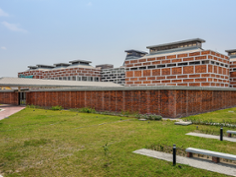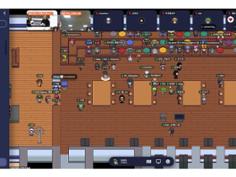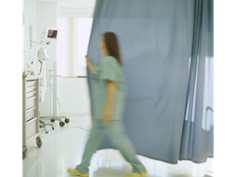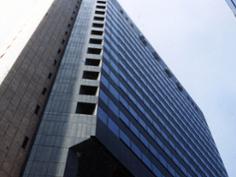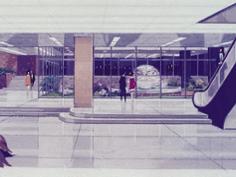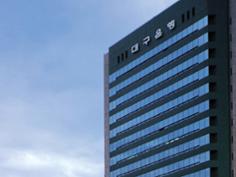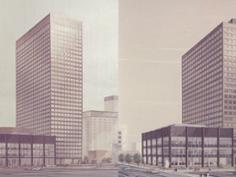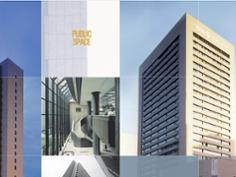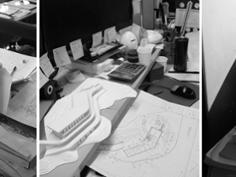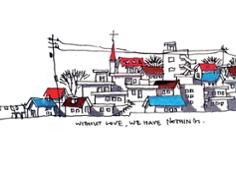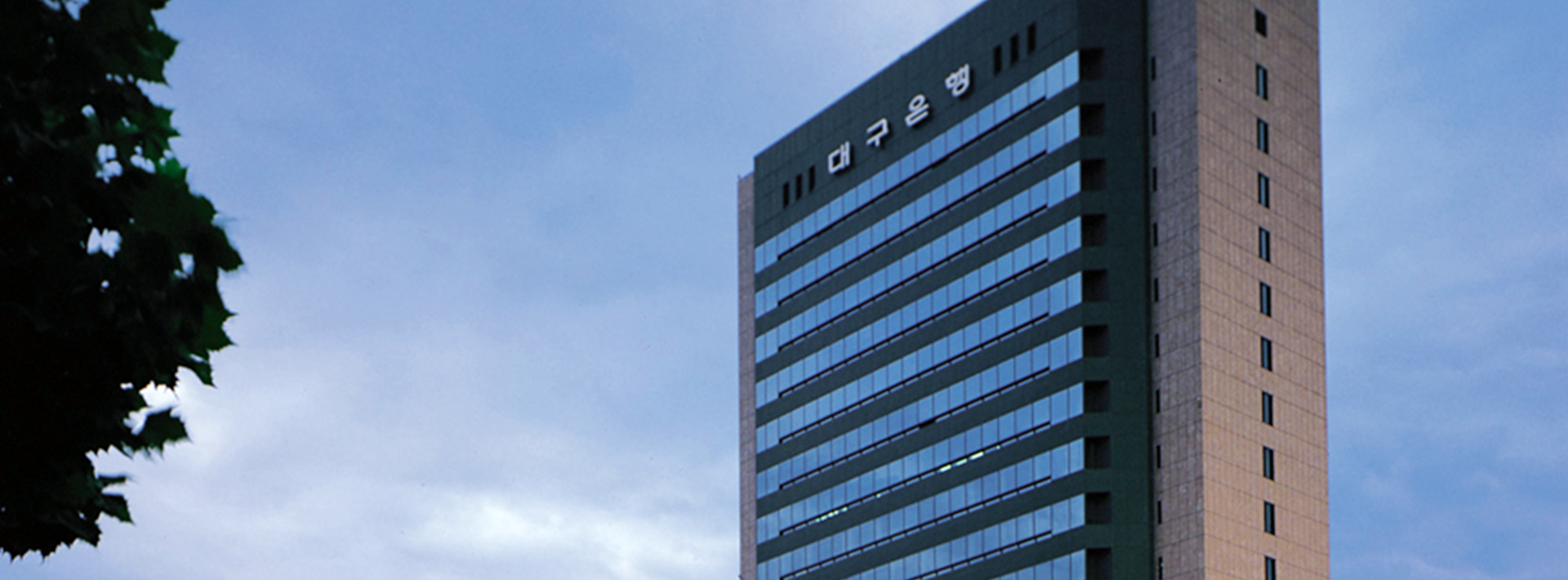
Daegu Bank Suggests the Completed Form of Bank Architecture
Ruminating upon the basics of Junglim Architecture - 3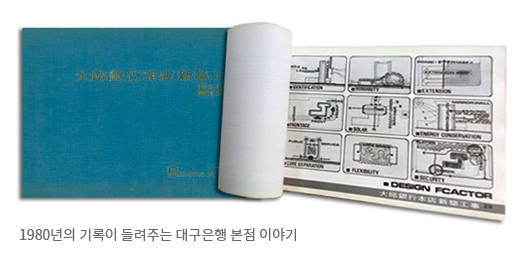
A Document in 1980: Design Report on Daegu Bank Headquarters
Design Report on Daegu Bank Headquarters was drawn up in June, 1980. This report mirrors the design team's efforts to create a building sustainable over long time by carefully considering users and working out the contextual process between architecture and the city.
A Systematic Process Built to Raise the Perfection of Daegu Bank Headquarters
Daegu Bank Headquarters has 19 stories and its total floor area is more than 33,000 sq. m. It would not be such a difficult task to build this scale of project in these days when large-scale complex facilities are built in many cities including those more than 100-story-high. Nonetheless, such a large-scale building project was rarely found outside of Seoul in the 1980s when the DB Headquarters was built. Given this situation, the difficulty for the design team to have had in the process of design would be beyond our present imagination.
In this sense, Design Report on Daegu Bank Headquarters includes the whole content of the basic design that is not easily comprehended only with the drawings. Specifically, it documents the process of suggesting the design requirements and analysis methods for large-scale buildings, synthesizing the rationally-analyzed content and applying it for making alternatives, and comparatively analyzing them and selecting the most ideal option. Also, it shows the construction of a process to work on a large-scale building, different alternatives that help the client to choose rationally, as well as the grounds for drawing up such options.
Design Report on Daegu Bank Headquarters is largely made up of the schematic design and the basic design. The former included the process from the purpose and elements of design to the choice of final proposal, while the latter included not only architectural, structural, mechanical and electronic designs, but also the elevator planning, disaster-prevention, main materials, and budget plan necessary for a large-scale office building. This kind of content is frequently found from any design report in these days, but it is surprising that such a systematic process was established in 1979 when large-scale buildings were scarce. Equally important, the diagrams and conceptual drawings were so refined and highly communicable as not to look drawn up 30 years ago. This is where the design team members' hard thinking and efforts are revealed. For the DB Headquarters project, they systematically classified design requirements, suggested specific grounds and reached a logical conclusion, thus minimizing the uncertainty of the project.
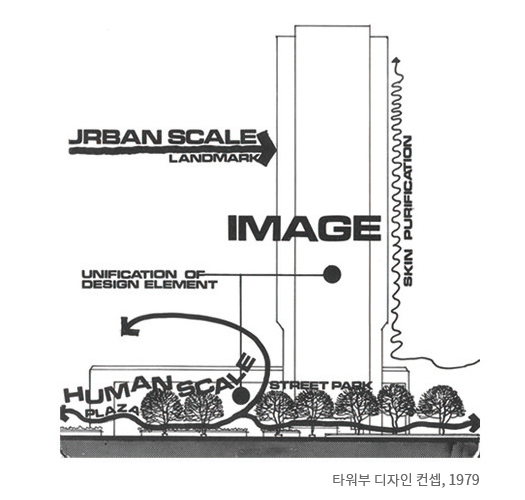
Exploring the Sustainability of Building in Prospect of the Changing Urban Fabric
Daegu Bank hoped its new headquarters would not only be easily maintained and sustain its value after completion, but also reflect its management philosophy, i.e. contribution to the community, according to which the bank headquarters was designed to be friendly to and loved by citizens. Such attempts to create a sustainable building can be found in various aspects, including the space and form with which the citizens can feel familiar as well as the environmentally friendly elements.
First, the DB Headquarters was designed to reduce the sense of heaviness from the 19-story high-rise, in the urban and human scales respectively. An interstitial space was made to articulate the tower and the podium separately, while the lower mass of the tower on which the public view is concentrated was designed to have an oblique orientation. The urban scale was considered for the tower which was designed in a refined form, while the human scale applied to the CS wing podium where many people move and to such publicly open elements as the yard, sunken garden, fence, and piloti, in order to create a sense of familiarity. Thanks to this design, Daegu Bank which was the economic hub of the city at the time was able to communicate its familiar image to the local citizens as well as the customers. The design made it possible to sustain the value of the building by placing devices which are comfortably accessible by citizens with a sense of extraordinariness.
Second, energy saving was taken into account. At the present age which is witnessing high interest in and necessity of environmentally friendly buildings, various elements for eco-friendliness (e.g. passive design elements) are actively incorporated from the initial design phase. However, 30 years ago when even the term 'environment-friendly' was unfamiliar, it would be like an adventure to reflect such elements in architectural design. Nevertheless, the design team of the DB Headquarters continued to think over how to save energy from the initial schematic design phase. It was materialized to such solutions as the core layout in consideration of daylight, minimization of heat loss, natural air circulation between the inside and the outside, and appropriate sky blockage in consideration of solar radiation. The team's investigation of energy-saving measures and analyses of various elements including mechanical equipment, materials, and construction techniques made it possible to discover an optimal measure.
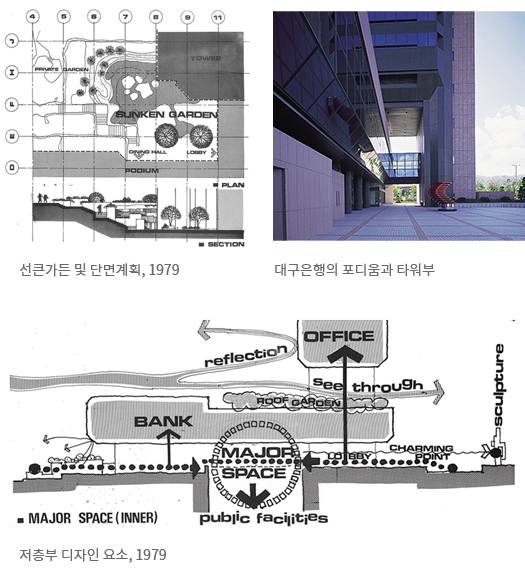
Thinking Out the Better Bank and the Better Space
The new type of bank architecture and the user-oriented spatial design — firstly attempted for Korea Exchange Bank Headquarters — became more completely realized in Daegu Bank Headquarters. The latter has an exceptional meaning as the first local bank of the city and is located in the urban center of Daegu, expected then to be develop greatly in future. Considering these symbolic nature and site condition of Daegu Bank, design elements were analyzed into functional and social-symbolic elements from the basic research phase, in a systematic process of distinguishing between the internal and external conditions of the building.
This process led to the addition of the front common space and the sunken garden to which every Daegu citizen could have access, as spaces whose users extend to general citizens beyond the people concerned of Daegu Bank and the customers. This can be seen as the effect of synergy between the client's will to provide open space for citizens and the architect's endeavor to accept the client's will and embody it into the space.
To elicit this outcome, careful analysis was conducted on the road condition, the neighboring environment, and the conditions inside and outside the site, all of which were reflected in the site plan. Also, the outdoor space was distinguished into the access; private garden exclusive for the bank; sunken garden; roof garden; street park; plaza; and sport zones. This differentiated outdoor zoning was to help customers experience various spaces by characterizing each of them with clear identity. Particularly, the roof garden between the tower and the podium was a new attempt: to create a new nodal place of continuity between the building and the outdoor spaces. At the time of planning, the roof garden was to be used by those concerned of the bank; but later on, it became a space for everyone and loved by all Daegu citizens.
In comparison with the KEB Headquarters, the DB Headquarters is also distinguished into the podium and the tower. Looking closely, however, one can see the difference in their connection, which is now separated in the DB Headquarters. This is a consequence of deliberation to prevent a sense of authority created by the unified conjunction of both masses and instead design it as comfortably accessible to users. The lower part of the tower mass was given an oblique orientation to clarify spatial organization and serve for the symbolic as well as sculptural qualities of Daegu Bank. Besides, fences and lower-floor pilotis were fully utilized to allow users to feel familiar with the large-scale high-rise building.

Reconstructed excerpts from "Ruminating upon the basics of Junglim Architecture," Junglim Architecture Works 2013

